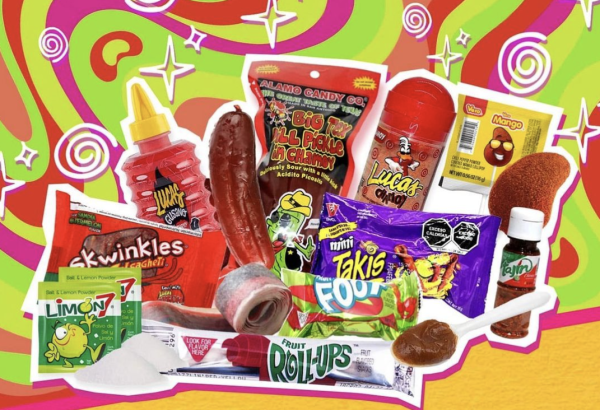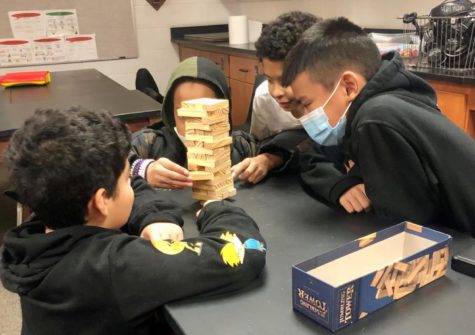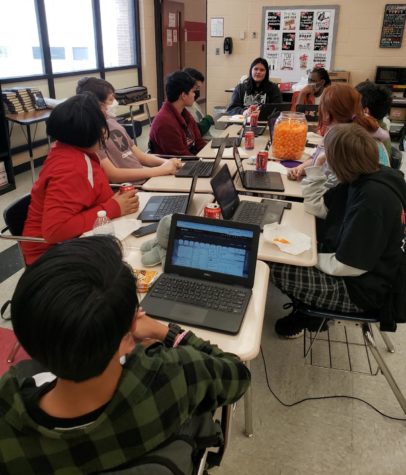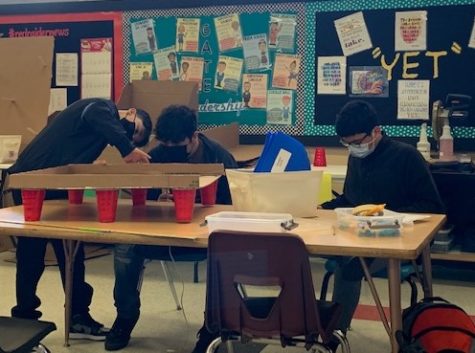Students Share Memories of Hurricane Katrina
August 29, 2015, marked the ten-year anniversary of a tragic event for residents of New Orleans, Louisiana: Hurricane Katrina. Despite being under the age of six at the time, Natyione Tubbs, 9th, and Germar Smith, 8th, remember it well.
Winds up to 400 miles per hour had stretched across the region. When the levees broke, the waters from the Gulf of Mexico flooded in. Some had driven out of the city before the storm hit. Others climbed to the roofs of their houses and waited to be rescued either by helicopter or boat. Up to 70,000 people were taken to the Superdome. Conditions there were not good as there was no sick bay set up and few cots available. Most people were elderly, low-income African Americans. It was difficult because many doctors and nurses had evacuated earlier.
“I lived in New Orleans since I was born until I was twelve years old,” Germar said.
During Hurricane Katrina, Germar was only four years old; he went through a lot for his age.
“I saw my baby cousin drown,” Germar said. “I also saw my dad die. When we were trying to leave, this man was trying to get his children, but he got shot and died. I heard people screaming ‘Help me!’ and saw so many houses flooded!”
At that moment he was only thinking, “How am I going to go along with my life if my cousin and dad had died?”
“It was difficult to see other people’s family members die,” Germar said.
Natiyone, who was only five years old when Hurricane Katrina hit, remembered even more things because she was a little bit older.
“Everything was really crazy,” Natiyone said. “They had to evacuate us quickly to the Superdome. I heard thousands of people banging on the doors. We had to stay there for about two to three weeks. The Superdome had rows of beds and nasty food. We had to shower with so many people! To make things worse, the lights went out.”
Natiyone lives with the memory of the challenges and difficulties caused by this tragic storm.
“I also had to accept the fact that this storm took my best friend,” Natiyone said. “We got on a bus and were driven to Fort Chaffee, Arkansas, to try to start over. It was really hard to regain what we had already lost which was everything.”
More than 10,000 evacuees from Louisiana, Mississippi, Texas, and other areas affected by the hurricane and its aftermath arrived by busses at Fort Chaffee. Wal-Mart donated thousands of truckloads of supplies.
“We tried to get some clothes and food from the Wal-Mart trucks, but it was really hard,” Natiyone said. “There was a big riot. People waited in line for hours, and the supplies ran out. People were mad, and some soldiers gave up their own supplies.”
Mr. Morris, who worked with the sheriff’s department at the time, remembered how awful the evacuees looked as they arrived in a caravan of buses. He helped keep the peace when fights broke out.
“I will never forget the sadness of one elderly man who broke down and cried when he was shown a kindness,” Mr. Morris said. “He had waited for hours. The man hugged me and thanked me profusely as I accompanied him to the front of the line to receive his food, clothes, and bedding.”
Hurricane Katrina was a life-changing event.
“This storm left a scar in my life that will never go away,” Natiyone said.












